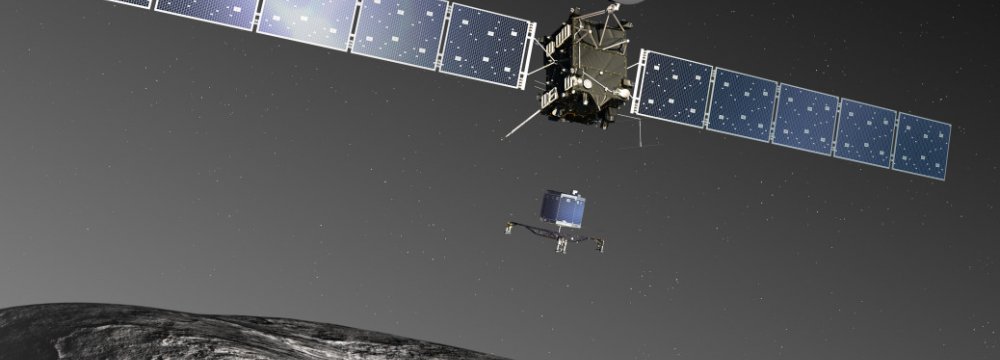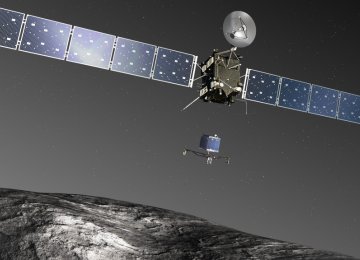Touchdown! The Philae probe has landed on the surface of a comet, scientists from the European Space Agency (ESA) announced Wednesday, CNN reported.
It is the first time a soft landing has been achieved on a comet.
Shortly after news came, the probe tweeted: "Touchdown! My new address: 67P!"
Led by ESA with a consortium of partners including NASA, scientists on the Rosetta mission hope to learn more about the composition of comets and how they interact with the solar wind -- high energy particles blasted into space by the Sun.
The Philae lander separated from the mother ship Rosetta around 3:30 a.m. ET to begin its 7-hour descent.
Philae, which has spent 10 years fixed to the side of Rosetta during the journey across the solar system, could not be steered. Once it was released, it was on its own.
Scientists are hoping the probe will help us learn a lot more about the composition of comets and how they react when they get close to the Sun.
Weighing in at 220 pounds, it might be the size of a domestic washing machine but Philae is considerably smarter.
It is equipped with an array of experiments to photograph and test the surface of Comet 67P as well as finding out what happens when the roasting effect of the Sun drives off gas and dust.
The comet's gravity is so weak that engineers have come up with ingenious solutions to keep Philae in place. At touchdown two harpoons fire out from the legs and screws on each of the three feet help attach it to the comet.
Built by a European consortium, led by the German Aerospace Research Institute (DLR), the landing probe has nine experiments.
According to details on ESA's Rosetta website, sensors on the lander will measure the density and thermal properties of the surface, gas analyzers will help to detect and identify any complex organic chemicals that might be present, while other tests will measure the magnetic field and interaction between the comet and solar wind -- high-energy particles given off by the Sun.
Philae also carries a drill that can drive 20cms (8 inches) into the comet and deliver material to its on-board ovens for testing.





